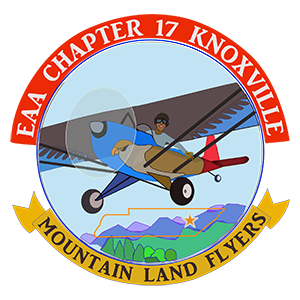EAA Partners with FAA, Dynon for STC Breakthrough to Upgrade Safety, Reduce Costs for Aircraft Owners
EAA, in partnership with Dynon Avionics and the FAA, has been awarded a Supplemental Type Certificate (STC) to install Dynon’s EFIS-D10A in certain standard category aircraft. This breakthrough STC enables the inexpensive, but very capable, avionics that have served the experimental and light-sport worlds for decades to finally have a pathway into the type-certificated market. The Dynon system is a direct replacement for a vacuum-driven attitude indicator, and the STC currently applies to the Cessna 150, 152, and 172 series and the Piper PA-28 and PA-38 series.
More aircraft are expected to be added soon.
EAA worked extensively with the FAA and Dynon to show compliance with regulations and develop a new certification pathway for safety-enhancing equipment. The long track record of the D10A product line and its conformity to a variety of industry standards helped it become the first device accepted by the FAA in this pioneering effort. In addition to Dynon’s proven reliability, the unit delivers a wealth of information to the pilot and even has an integrated angle of attack feature (with the installation of an optional probe). EAA installed the D10A in its 1976 Cessna 172M and submitted to a series of flight tests with an FAA test pilot, which went flawlessly.
EAA intends to begin selling the STC as soon as possible, hopefully later this spring, at a nominal price point in line with its existing autofuel STC. In addition to the D10A, more products are actively being explored as EAA is willing to work with other manufacturers to bring down costs and reduce barriers to recreational flying. Stay tuned for more details!
Charlie Becker, EAA Lifetime #515808
Director of Chapters, Communities &
Homebuilt Community Manager
EAA Chapter 252 President www.eaa252.org
EAA—The Spirit of Aviation
Phone: 920.426.6850
Fax: 920.426.6560
Publisher’s Note:
The EAA/ Dynon STC has received lots of attention from the aviation press, with headlines such as this:
STC FOR DYNON D10A COULD BE THE BEGINNING OF THE END FOR CERTIFIED GA AVIONICS
Aviation International News’ Matt Thurber wrote that this could be the “first step toward opening up the general aviation market for non certified avionics,” which could benefit innovators as well as consumers. Apparently, Mr. Thurber, like many, failed to grasp the “C” in STC.
Supplemental Type Certificate. The D10A installation, when properly applied, will be certificated avionics.
The industry and flying community will be interested to see how this will eventually play out, as the FAA works to apply this and future STC.
Everyone recognizes that the new electronic attitude indicators are far superior to the vacuum driven antiques. But non-certified?
In late April 2016, the FAA issued policy PS-ACE-23-08-R1:
Summary
This policy statement describes acceptable compliance methods for replacing vacuum-driven attitude instruments with electronically-driven replacement indicators. Electronically-driven attitude indicators include indicators that use electrical power in place of vacuum to (1) excite an internal gyro, or (2) replace the operation of the gyro with microelectronics. Electronically driven Attitude indicators may replace the existing attitude indicators used in VFR or IFR airplanes.
Policy
For part 23/CAR 3 aircraft under 6,000 pounds with vacuum-driven attitude instruments, it is acceptable to replace vacuum-driven attitude instruments with electronically-driven attitude indicators under the following conditions:
- A single function vacuum-driven attitude indicator may be replaced with a single function electronically-driven attitude indicator.
- The electronically-driven attitude indicator has an independent standby battery that is capable of at least 30 minutes of power to the new instrument in the event of a loss of primary electrical power.
- The final installation and arrangement must allow for use of partial panel techniques in the event of a loss of the electronically-driven attitude indicator source.
- Compliance must meet all other applicable regulations.
